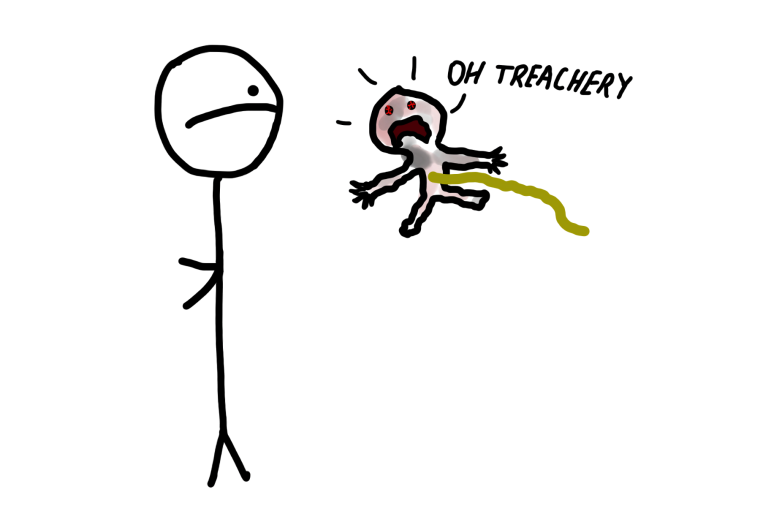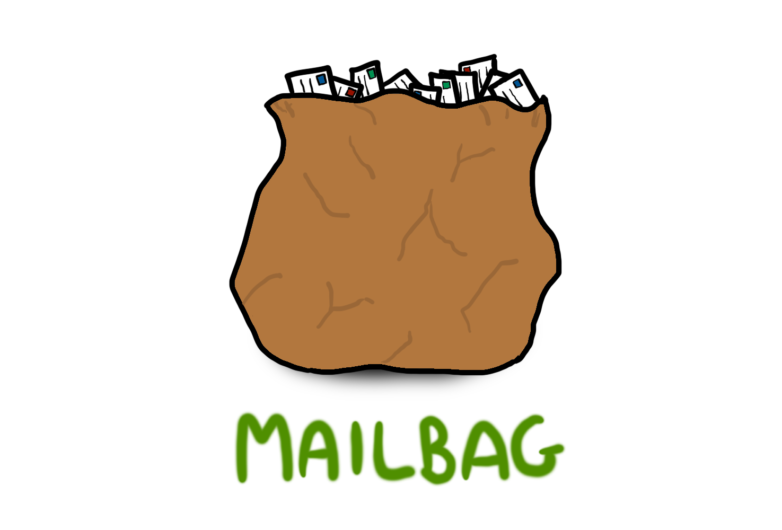“Why is my laptop on?” does not seem like a complex question.
But when I tried to answer it this week—to really answer it—I realized that I only kind of understood energy pretty well.
And then I thought about you. And knowing you, you probably also only kind of understand energy pretty well.
So I took a deep breath, briefly questioned the point of my existence, and then dug into hours and hours of reading about energy. The end result is that now I’m someone who definitely understands energy maybe not really well but better than pretty well.
I learned a lot, but since I’m not really sure what you know and what you don’t know, I’ve done two things:
1) I’ve written a post here getting to the bottom of the question, “Why is my laptop on?” This is the main post.
2) I’ve written an add-on post called Energy for Dummies that goes through all the major kinds of energy in today’s world—coal, oil, natural gas, nuclear, biomass, hydroelectric, wind, solar, and geothermal—and explains what they are, how they work, and how big a role they play in things. If you’d like to brush up on your understanding of all that, check it out.
___________________
Okay, so why is my laptop on?
To answer this question sufficiently, I found a four-year-old boy on the street, offered him candy, kidnapped him, and now every time I think I have the answer to the question, he’ll ask “Why?”—because that’s what four-year-olds do—and that’ll force us to get to the real answer. We’ll call him George. Everyone say hi.
So my first answer to the question is, “Because I turned it on.”
George: Why?
Good question, George. I turned it on because I had to write this post. Well, no, actually I just said that—the truth is that my laptop is always on. I literally never turn it off.
George: Why?
Because modern laptops don’t really need to ever be turned off. And because I have a problem and I’m in love with my laptop.
George: Why?
Because I’m addicted to mental stimulation and I have no self-discipline.
George: Why?
Because I’m still in some weird rebellion against childhood authority even though I’m 32.
George: Why?
Because I’m just not that big a man.
George: Why?
Because I grew up in a world that bred softness into me. I’m a GYPSY.
George: Why?
Wait.
What the fuck is going on? This isn’t at all what was supposed to be happening. This post is supposed to be about energy. Look, George, I need you to adjust your approach. I want you to not just ask “Why?” but to be more specific and make the questions energy-related. We’re trying to figure out how energy works.
George: Why?
Because that’s more interesting than exploring my personal shortcomings.
George: Why?
No. This isn’t working. I’m revising this drawing and making George six years old. I forgot what four-year-olds were like.
Okay he’s six now.
Let’s try again. My laptop is on because it has electricity running through it.
George: Why does the laptop have electricity running through it?
Because it’s plugged into a power cord, which is plugged into the wall socket.
George: Why does the wall socket have electricity in it?
Because it’s connected to New York City’s electrical grid.
George: Why does New York City have an electrical grid?
Okay, he’s actually brought up an interesting point here—let’s better understand this by taking a quick look at the history of humans using energy. You can divide this history into three general eras:
1. Energy in the really, really old days — doing hard things with your arms and being upset about it
Pre-historic humans hadn’t really figured out how to do stuff.
2. Energy in the pretty old days — harnessing natural forces directly
At some point humans realized that they could outsource some of the hard labor by putting natural forces to work—a thrilling development. The earliest widespread example is the controlling of fire, which first happened between 125,000 and 400,000 years ago (depending on whom you ask). More recently, there’s ample evidence throughout the past 5,000 years of the use of windmills, dams, and other tools to convert natural forces into useful mechanical energy, and starting in the early 18th century, highly sophisticated technology like the steam engine to power ships and locomotives.
These are all examples of using the energy of natural forces directly—i.e. we learned all kinds of ways to harness natural energy, but that energy had to be used at the time and place of its harnessing. For example, a windmill in the old days would spin and that spinning force could be used to lift water or grind grain, but its limits would be whatever the physical spinning of the machinery could accomplish. Direct employment of energy is still common today—just think of everything that still works during a blackout. Your stove and heat (if they use gas), your toilet (which uses gravity to flush—just pour a bucket of water in), a wood fire or lit candle, your car—all examples of modern humans making energy straight from something in nature, with no middle man.
3. Energy in modern times — harnessing natural forces indirectly and at great scale
The world starkly changed about 100 years ago when humans learned to generate electricity and distribute it far and wide as controlled energy, through the electrical grid. It’s probably the single most impactful development in human history.
Suddenly, huge amounts of energy could be released on an industrial scale, converted into electricity, transported somewhere far away, and then converted into energy of almost any kind at the user’s convenience. A blazing hot coal fire on one side of a country could now be used to freeze ice on the other side. And a modern windmill can do a lot more than just lift or grind things—it can generate electricity, which can be used to do almost anything. My laptop works, and the energy it’s using might have originated with coal burning, atoms breaking, wind blowing, or rivers flowing—it doesn’t matter to me. All those natural forces look the same when they reach me—an outlet that pours electricity into whatever I plug into it.
In a way, electricity serves the world of energy like money serves the world of value:
So anyway, that’s why New York, and almost every city on Earth, has an electrical grid.
George: Why is there electricity in the electrical grid?
Because it’s connected to a power plant, which generates electricity and sends it into the grid.
George: How does the power plant make electricity?
Okay, this is a good time to mention the Law of Conservation of Energy, which states that energy can’t be created or destroyed, only converted into different forms. This means that humans can’t “make” energy, they can only harness existing forces and manipulate them into forms that suit them. So the only way to generate electrical energy is to convert some other existing source of energy into electricity.
In the case of a typical electricity-generating power plant, there are a few possibilities for the type of plant it is:
1) A type of renewable energy plant (i.e. hydroelectric, wind, solar, etc.). These sources make up a small minority of the world’s electricity—in the US, they account for about 11% of the electricity.
2) A nuclear power plant. Nuclear power makes up only 2.8% of the world’s energy, but actually represents a decent amount of the electricity in the US—about 21%.
3) A fossil fuel power plant. Almost 80% of the world’s total energy is sourced from fossil fuels—coal, oil, and natural gas—and fossil fuel power plants account for about 2/3 of the electricity in the US.
For this reason, I’m going to assume what the probability suggests—that the electricity in my laptop can be traced back to a fossil fuel power plant. And this applies to you too—no matter where you are in the world, whatever device you’re using to read this is probably able to be on because of a fossil fuel plant.
So back to George’s question—how does a fossil fuel plant make electricity?
It does so by burning a fossil fuel, which when it comes to electricity is either coal or natural gas (oil is used primarily as transportation fuel, not to generate electricity). Power plants burn coal or natural gas in order to boil large amounts of water and send steam roaring up into a turbine (a big propeller), causing it to spin. The turbine is connected to a shaft covered in coils of copper wires and surrounded by magnets. When the turbine spins, so do the copper coils, which shoot electrical currents down a wire, out of the power plant, and into the city’s grid as electricity.
So a burning fossil fuel, like coal, is what eventually led to the power in my laptop.
George: But you said energy can’t be created, only converted—so where did the energy come from that the coal released when it was burned?
Not bad for a six-year-old. So this leads to the question, “What are fossil fuels?”
Fossil fuels are made up of the remains of plants typically dating back to the Carboniferous Period, which took place between 300 and 360 million years ago, before even the dinosaurs were around.
Most plants, when they die, decompose, and any energy in them is released soon after their death. During the Carboniferous Period, though, many plants, algae, and microorganisms died in swamps or in the ocean, sunk to the bottom, and became buried in sand, clay, and other materials, retaining their energy along the way. Over millions of years, as more and more sand and rock piled on top of the dead organisms, the intense pressure eventually turned them into coal, oil, or natural gas. The energy that those ancient organisms died with is still there today in the form of chemical energy in the fossil fuels.
So it was the energy in those plants, living back then, that the power plant is releasing today through burning the fuel (combustion).
George: Are we gonna run out of fossil fuels?
Sorry George, you’ll have to read the other part of this post for that because I don’t want to write it twice.
George: Okay, but where did that energy come from? How did the energy get into those ancient plants in the first place?
The same way energy gets into plants today—photosynthesis.1
Photosynthesis is remarkably simple. Here’s how it works with a tree:
Sun shining on the tree breaks up the CO2, leaving carbon in the tree to make its substance and sending oxygen off as a byproduct. During this molecule breakup process, the tree absorbs energy from the sun (as chemical energy), which remains in the tree. When you burn a log, all you’re doing is reversing that process, returning the carbon and the oxygen back to each other and releasing the stored sun energy in the process, in the form of fire. Fire is the light and heat of the sun, absorbed into the wood for years, finally being released.
This is the same exact thing that’s happening when we burn fossil fuels—except unlike a log, fossil fuels absorbed the sun’s energy over 300 million years ago, so the energy that’s being released is ancient, 300 million year-old sunlight.
So my laptop and your device are being powered by an ancient sun—whose energy has been held hostage by dead plants for eons.
George: Okay so the energy in the laptop comes from the ancient sun—but where did that energy come from?
The sun’s energy is all a result of nuclear fusion going on in the center of the sun—the process of atoms being squished together under unthinkable pressure until they combine together into a single atom, releasing a lot of energy in the process. It’s the opposite of nuclear fission (which is how nuclear power plants make energy) and looks something like this:
So the energy explosion from the nuclear fusion shoots photons outwards from the sun’s core, and those photons unimpressively take roughly 100,000 years to reach the sun’s surface, but then only eight minutes to reach the Earth from there, which is when they can first be absorbed by a plant.
George: And where did that energy—the nuclear fusion—come from?
Nuclear fusion happens in a star’s core simply because the immense amount of matter of a star creates superb gravitational pressure in the core—so strong that it ignites nuclear fusion.
And what is gravity?
You’re quite the kid, George.
Gravity is curved spacetime—a “dimple” in spacetime made by matter—and in the case of matter as massive as the sun, a really deep dimple.
So there’s the real origin of the energy that’s powering my laptop—a deep warping of space-time caused by the mass of the sun, which results in nuclear fusion, which 100,000 years later results in a plant on Earth absorbing the energy as part of its photosynthesis. The energy is then trapped in the dead plant underground and squashed over time into a fossil fuel like coal, which 300 million years later is dug up by a coal miner, shipped off to a coal power plant, and burned—which releases the light and heat of the ancient sun as fire. That fire is used in the power plant to heat up water to a boil, which releases the energy as steam, which spins a turbine inside a generator, which sends the energy shooting out into the power grid as electricity, which then flows out of the outlet in my wall when I plug in my power cord and into my computer, and now my laptop is on.
Thanks, George. I was pretty impressive just now, it’s true.
Anyway, this long process tracing my laptop’s power to the ancient sun’s gravity can be applied to non-electric energy too—your car running (the jumble under your car’s hood functions as a mini power plant, burning gasoline, which comes from oil, to release its ancient energy), a candle burning (how much cooler is a candle now that you realize that the wax comes from underground oil and has 300 million year old sun energy stored in it that’s finally released as a flame when you light it), or almost any other kind of energy in your life.
Even your own body. Why can I type this post with my fingers? Because my body has energy from the food I ate, which was either plants or animals who got their energy from plants, which brings us back to photosynthesis—in this case, recent photosynthesis, which means the sunlight powering my fingers is pretty new (but due to the photon lag time, the fusion that generated the sunlight, and the gravity that forced that fusion, are still 100,000 years old).
So that’s that, George—did you have fun?
George: I did. But wait—why does matter create a dimple in space-time?
Great! I’m glad you had fun, George. Run along, now.
______________
1. Photosynthesis is unbelievable. The entire food chain is just creatures stealing energy from other creatures—sometimes it’s an animal eating a plant or another animal, sometimes it’s calmer, like a bee stealing a flower’s nectar. But we rarely stop to ask, “How did all that energy find its way into the food chain in the first place?” With photosynthesis, of course. Plants figured out how to turn the sun’s energy into “food,” and this is the origin of all the energy throughout the food chain. Photosynthesis is the key moment when natural energy enters the world of biology—I don’t think about this enough.
[Reader David B. points out that there’s another way energy gets into the food chain: “Deep below the surface of the ocean are thermal vents where entire ecosystems live off the process we call chemosynthesis. There, chemoautotrophs drive the food web using inorganic sources of energy such as hydrogen sulfide.”]Check out Energy for Dummies for a quick Wait But Why crash course on all the relevant energy sources in today’s world.
Related Wait But Why Posts
Putting Time In Perspective
The AI Revolution: The Road to Superintelligence
What Could You Buy With $241 Trillion?
_______
If you like Wait But Why, sign up for our unannoying-I-promise email list and we’ll send you new posts when they come out.
To support Wait But Why, visit our Patreon page.














